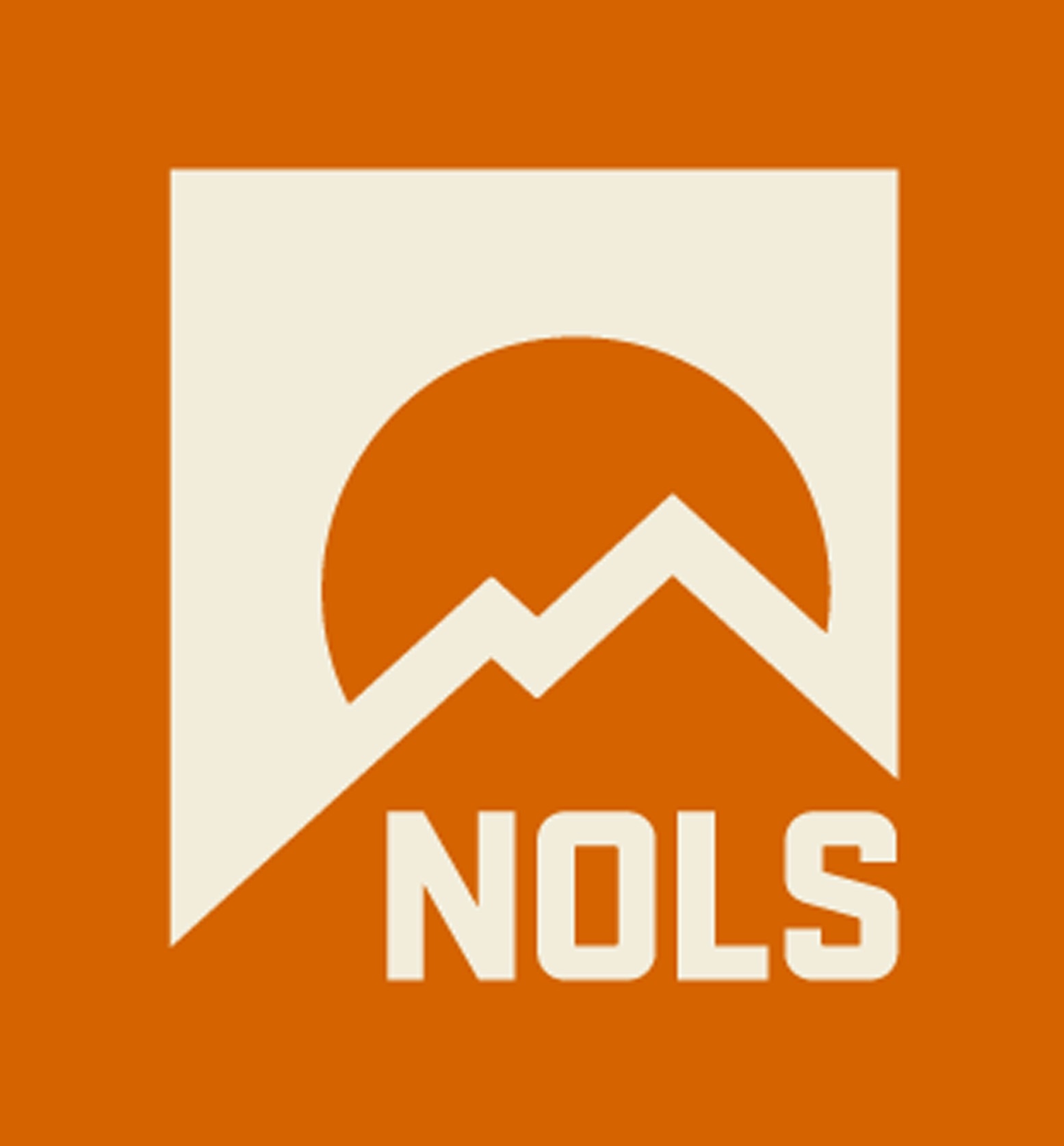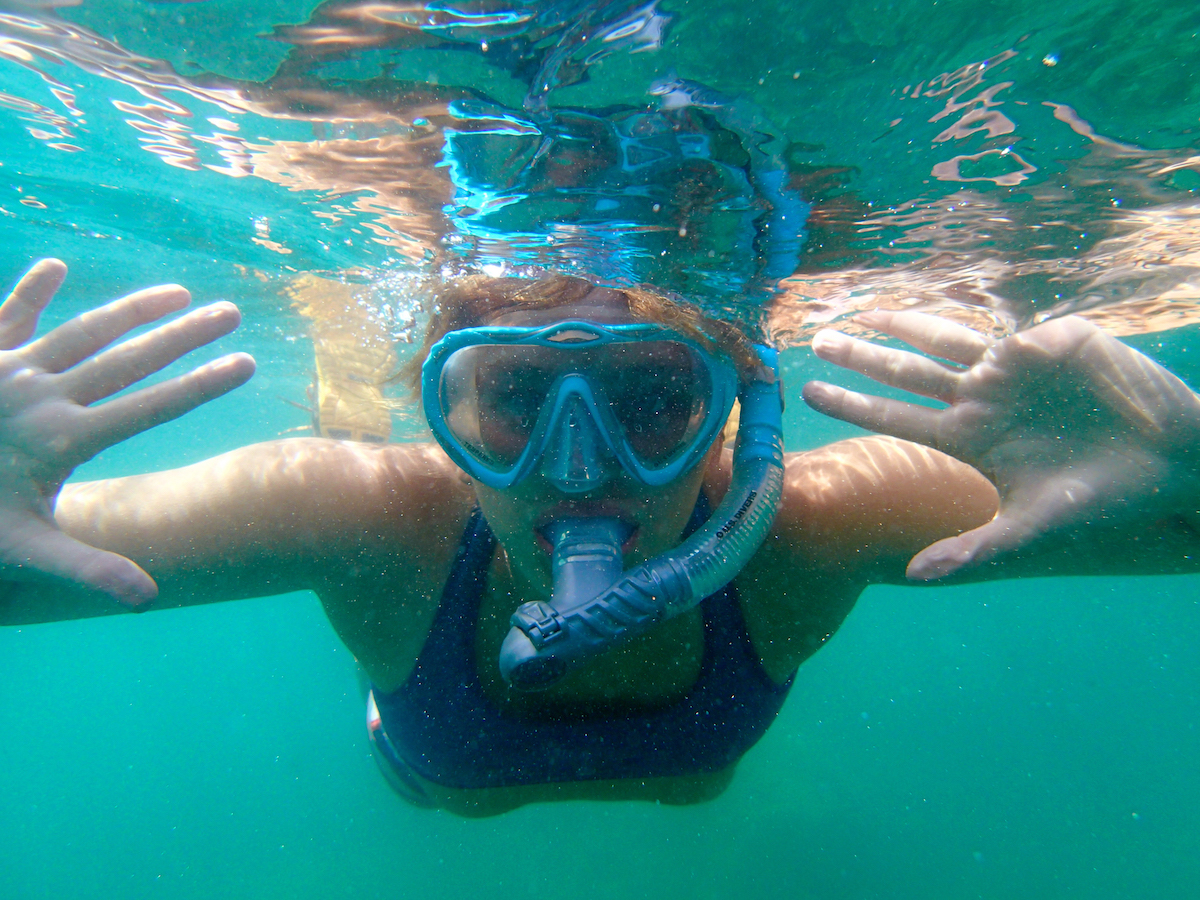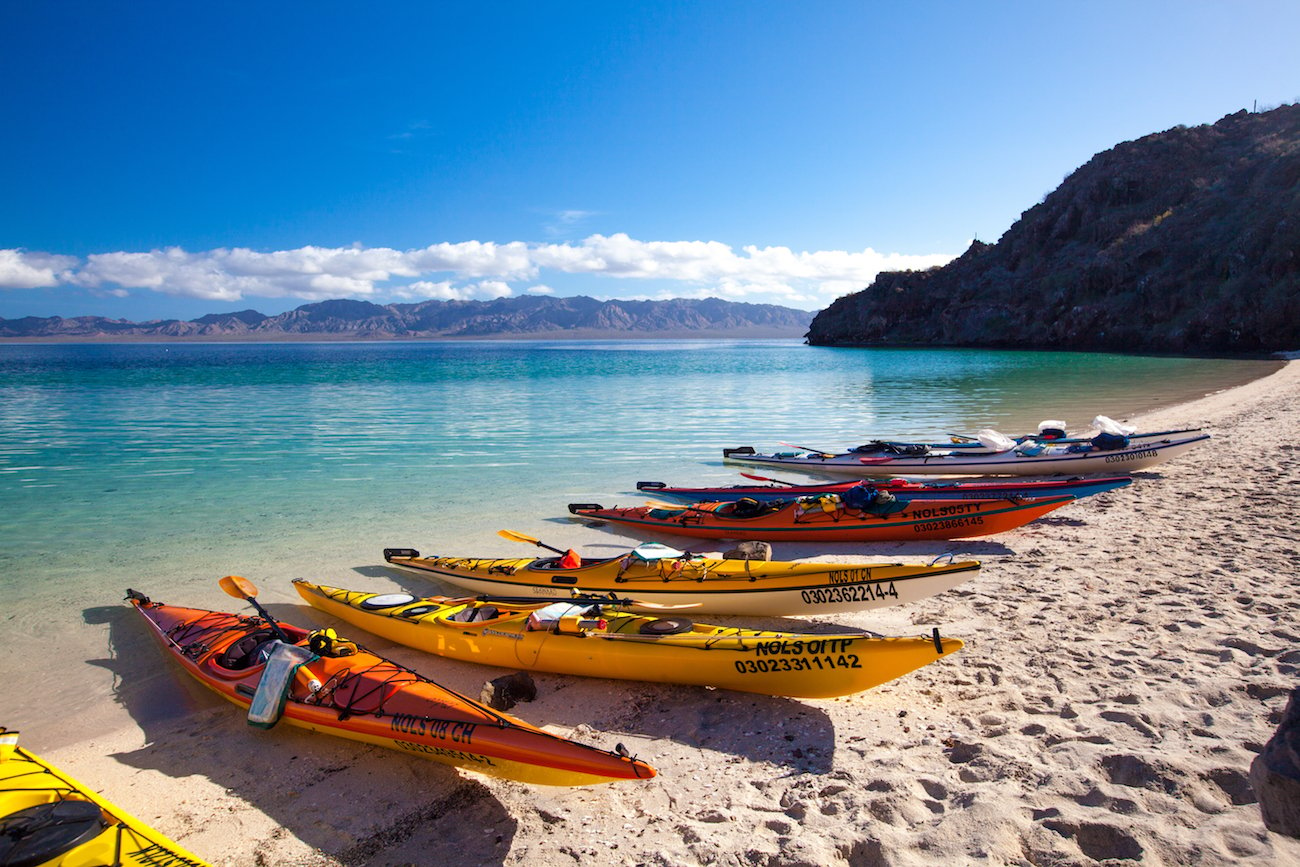As two of the most popular winter sports, skiing and snowboarding are often sparking lively debates among enthusiasts about which sport is better to learn first. Both activities have their own unique challenges and rewards, offering different experiences on the slopes.
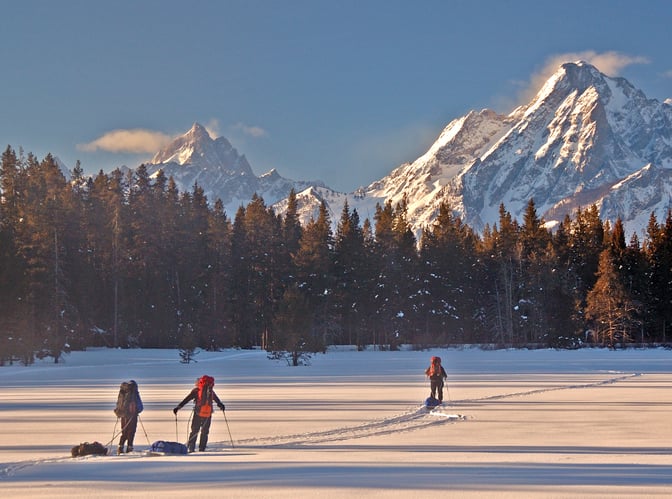 Photo by Brian Fabel
Photo by Brian Fabel
Skiing, an activity where you have your feet separated with a ski attached to each foot, is generally considered easier for beginners to pick up quickly. By the end of the first week, most new skiers can navigate their way around a resort and enjoy themselves on the slopes. On the other hand, snowboarding, where both feet are on a single board, usually has a steeper learning curve, especially for those without experience in skateboarding or surfing.
That being said, once the initial challenges are overcome, more experienced skiers and snowboarders will note that both skiing and snowboarding can provide a thrilling and rewarding experience as you glide through the snow. Some may prefer the stability and forward-facing style of skiing, while others might be drawn to the fluid, surfing-inspired movement of snowboarding.
Ultimately, the choice between skiing and snowboarding comes down to personal preference and what you enjoy most about winter sports.
Snowboard vs. Ski Equipment
One of the most distinctive aspects that sets skiing and snowboarding apart lies in each sport's equipment. Skiers have a ski on each foot and poles to help with balance and propulsion. In contrast, snowboarders use a single board for both feet and rely on body movements to navigate the slopes.
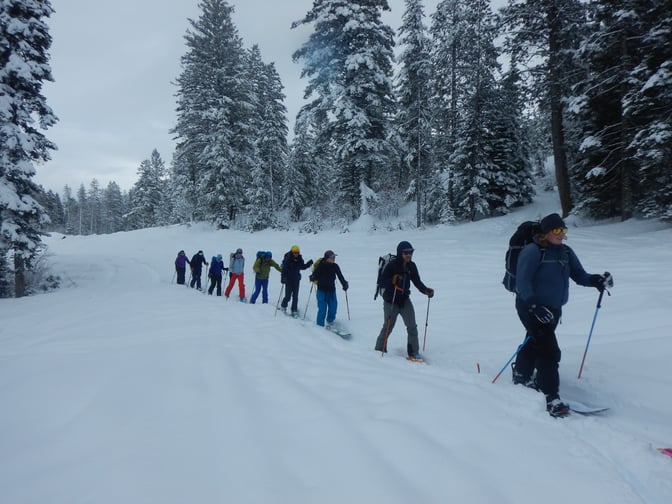 Photo by William Jahncke
Photo by William Jahncke
Here's a more in-depth overview of the key gear differences:
Snowboard vs. Skis
Skiers use two separate skis, one for each foot. This design allows for an independent movement of each leg, promoting a parallel stance facing forward. The skis themselves are narrower and longer than a snowboard.
Additionally, skiers hold and use ski poles, which play a crucial role in maintaining balance, aiding propulsion, and assisting in maneuvering through flat or challenging sections. The poles provide a sense of control and stability, especially for beginners who are still developing the basic skills of turning and stopping.
Snowboarders, on the other hand, rely on a single, wider board for both feet, set perpendicular to the direction of movement. This unique setup requires riders to adopt a sideways stance, facing across the slope. The absence of poles means that snowboarders depend entirely on body twisting motions and weight distribution to initiate turns, control speed, and navigate the slopes. The learning process involves mastering the subtle art of carving, which requires a harmonious coordination of body, board, and terrain.
Bindings and Attachment:
- Skis: Skis are attached to the skier's boots with bindings that secure each foot independently. The bindings are designed for a parallel stance, with the skis pointing straight ahead.
- Snowboards: Snowboards have bindings that secure both feet on the same board. The bindings are perpendicular to the direction of movement, allowing for a sideways stance.
Poles:
- Skis: Skiers use poles for balance, propulsion, and additional control. The poles are gripped with both hands and are an integral part of skiing technique.
- Snowboards: Snowboarders do not use poles. Instead, they rely on body movements and weight distribution to navigate the slopes.
Stance:
- Skis: Skiers typically have a more forward-facing, straight on stance, facing down the slope. This allows skiers to use their poles for balance and maneuvering.
- Snowboards: Snowboarders have a sideways stance, facing across the slope. Body movements, including twisting and leaning, are crucial for turning and controlling the board.
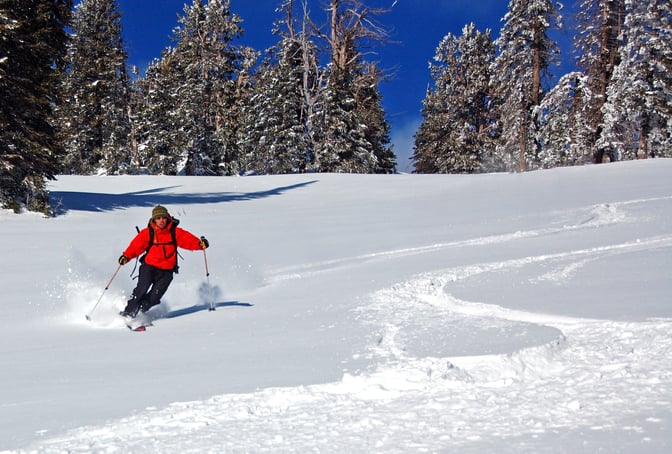 Photo by Brian Fabel
Photo by Brian Fabel
Snowboard Boots vs. Ski Boots
It's also important to note that there are significant differences between snowboard boots and ski boots, reflecting the unique requirements and mechanics of each sport. Here are the key distinctions:
Design and Flex:
- Snowboard boots are designed to be soft and flexible, allowing for a wide range of ankle movement. The flexibility is essential for executing turns and tricks, as snowboarders rely on body movements to control the snowboard.
- Ski boots, in contrast, are generally rigid and provide strong ankle support and prevent ankle injuries. The stiffness aids in transmitting precise movements from the skier's legs to the skis, enhancing control and responsiveness on the slopes.
Binding Attachment:
- Snowboard boots attach to the snowboard through bindings that secure both feet on a single board. The attachment is perpendicular to the direction of movement, allowing for a sideways stance.
- Ski boots attach to the skis via bindings that secure each foot independently. The bindings are designed for a parallel stance, with the skis pointing straight ahead.
Closure Systems:
- Snowboarding boots typically feature laces, boa systems, or a combination of both to ensure a snug fit. The lacing system allows for customization to accommodate different foot shapes and preferences.
- Ski boots often have a rigid outer shell and an inner liner. They use buckles or other closure systems to provide a secure fit. The design aims to minimize play between the foot and the boot for precise control.
Walking and Comfort:
- Snowboard boots are more comfortable for walking and casual wear. The softer design and flexible sole make them easier to walk in, although walking uphill on a snowboard can be a bit cumbersome due to the sideways stance.
- Ski boots are less comfortable for walking due to their rigid structure. Skiers often need to use special walking aids or "walk mode" features for short distances off the slopes.
Heel Lift:
- Snowboarding boots have a design that minimizes heel lift, as maintaining a snug fit is crucial for control and response.
- Ski boots often include features to address heel lift, such as adjustable straps and custom insoles, ensuring a secure connection between the foot and the ski.
Key Differences in Snowboarding and Skiing Techniques
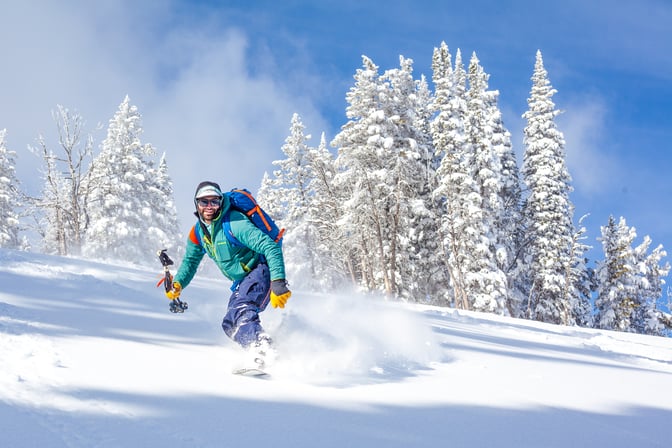 Photo by Molly Hagbrand
Photo by Molly Hagbrand
Body Movement and Balance
Maintaining good physical shape, balance, and body-awareness is important for those engaging in both skiing and snowboarding.
Skiers enjoy the freedom of having an independent ski for each foot. The parallel positioning of skis allows or a more forward-facing stance where feet point ahead. Weight distribution plays a crucial role, with skiers leaning forward in a squat and hinge motion to initiate turns and shifting weight between skis for control.
Snowboarders, with both feet strapped to a single board, adopt a sideways stance. The need for lateral movement is evident as riders use their shoulders and hips to steer. Body rotation is a fundamental skill, with the upper body leading the lower body in turning maneuvers.
Steering and Turning: The Art of Carving through Snow
Skiers utilize ski poles to aid in navigating and maintaining balance when it comes to steering. The poles are planted and swung rhythmically to help guide the skier down the slope and assist in turning. Snowboarders, lacking poles, rely solely on their body movements to steer. The front foot becomes the primary point of control, with subtle weight shifts directing the board's direction.
Skiers execute turns by edging the skis on their sides and pressuring the edges into the snow. The parallel nature of the skis allows for precise and varied turning radii, offering a more versatile turning experience.
Similarly, snowboarders initiate turns by tilting the board on its edge. The sidecut of the board plays a crucial role in determining turning radius, making snowboarding turns a unique and distinctive motion.
Stopping: Putting on the Brakes
In skiing, coming to a stop involves using a "pizza" or wedge technique that involves bringing the front tips of the skis to a point, while allowing the tails to stay apart. This method allows skiers to control their speed gradually and come to a controlled stop. Alternatively, skiiers may stop by applying pressure on the edges of the skis, forcing them perpendicular to the slope.
Snowboarders initiate stops by shifting their weight to the back foot and turning the board across the fall line. This technique, known as the "heel-side edge," enables riders to skid to a stop with finesse.
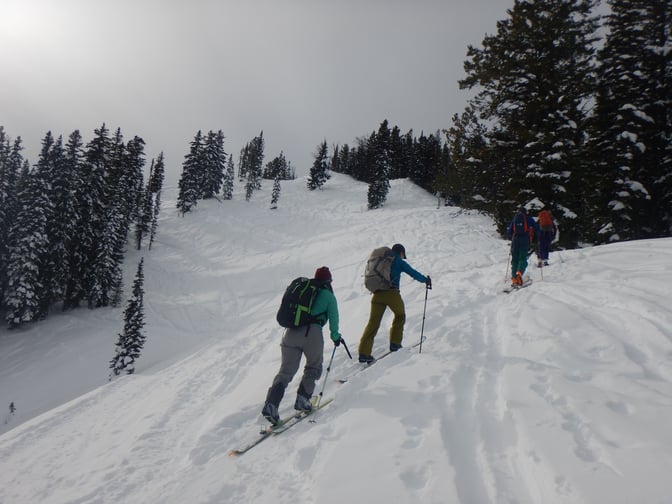 Photo by William Jahncke
Photo by William Jahncke
Uphill vs. Downhill Mobility
Climbing uphill in skis can be achieved through a technique called "skinning," where special attachments on the skis grip the snow. Downhill mobility is characterized by the skier's ability to carve through the slopes, utilizing varied turning techniques.
Ascending uphill on a snowboard is more challenging due to the lack of a free heel. Many snowboarders choose to hike or use ski lifts to reach elevated terrain. Going downhill involves seamless edge control and weight distribution to navigate slopes of varying steepness.
Navigating Flat Terrain
Skiers have an advantage when it comes to navigating flat or gently sloping terrain. The free heel and long, flat base of skis allow for a more straightforward gliding motion. Skiers can use their poles to push and propel themselves forward, employing a technique known as "skating." This method mimics the motion of ice skating, with skiers pushing off one ski while gliding on the other, creating a fluid and efficient movement on flat surfaces.
On the other hand, flat terrain poses a unique challenge for snowboarders. With both feet strapped onto a single board, the lack of a free heel makes pushing or gliding on flat ground more cumbersome. Snowboarders often resort to unstrapping one foot from the board and pushing themselves along with the free foot, a process commonly referred to as "skating" or "skating out." While effective, this method is not as seamless as skiing on flat surfaces and may require more effort.
Alternatively, snowboarding enthusiasts can opt for a splitboard—a specially designed snowboard that can be split into two separate skis for navigating uphill and flat terrain. This innovative equipment is common in backcountry snowboarding and allows snowboarders to traverse flat or uphill sections more efficiently, akin to the way skiers navigate such terrains. By converting the splitboard into skis and having two poles on hand for climbing and then reattaching them into a snowboard for descending, individuals can seamlessly tackle a variety of landscapes, making uphill and flat terrain snowboarding more versatile.
Is Skiing or Snowboarding Easier?
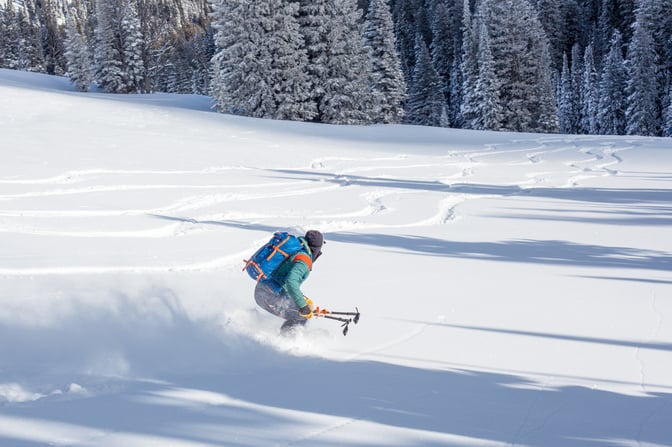 Photo by Molly Hagbrand
Photo by Molly Hagbrand
Ah, the Age-Old Question: Which is Easier to Learn, Skiing or Snowboarding?
When comparing skiing and snowboarding, especially as a beginner, it's natural to wonder which sport is easier to learn, many using the answer to this question as the primary marker to inform their snow sports choice.
While each has its initial challenges that affect difficulty, both sports require practice and dedication to develop the necessary skills and confidence.
For the first day or two, skiing is generally considered easier to pick up. This is largely due to a couple of reasons. With skiing, your legs remain separated, allowing you to throw one leg out if you start to fall to help regain balance at low speeds. Additionally, the facing forward nature of skiing often makes it easier for beginners to maintain balance and control.
However, skiing has its challenges as well. Maintaining balance on two separate skis, learning to use ski poles effectively, and mastering different types of turns (e.g., parallel, short-radius) can make this sport difficult at the beginner stage.
Snowboarding has a slightly steeper learning curve, as riders stand sideways on a single board, which can feel awkward at first unless you have experience with skateboarding or surfing. Getting used to having both feet attached to one board, developing balance with a sideways stance, and learning to transition from heel-to-toe edges smoothly may take a bit more time. However, many enthusiasts appreciate the challenge and uniqueness that comes with snowboarding.
Instead of basing your decision on which is easier to learn, consider which sport appeals more to you and what kind of experience you’re looking for, as the skill development for either skiing or snowboarding will come with practice.
Which is better for Leadership Development?
At NOLS, we advocate that both skiing and snowboarding offer rich and diverse platforms for the development of leadership skills and the forging of tight-knit communities.
Our winter sport courses are predominantly situated in the backcountry, where continuous assessment of snow conditions is crucial and intentional decisions are made to steer clear of avalanche-prone areas. This setting becomes the backdrop for honing communication, decision-making, and teamwork skills.
Guiding a group downhill or navigating remote snowy landscapes presents challenges that act as a crucible for leadership, requiring finesse in decision-making, clear communication, and adept handling of unforeseen situations. These snow-covered slopes become a dynamic testing ground, where emerging leaders are equipped with skills honed in the crucible of diverse, fast-paced terrains.
So, is skiing or snowboarding for you?
Ultimately, whether you choose to carve through the snow on skis or a snowboard, the mountains become a transformative space for leadership growth.
Both skiing courses and snowboarding courses at NOLS offer opportunities to hone skills related to the technical sport, develop leadership qualities, gain avalanche rescue skills, and build a community of winter-sport-loving individuals.
At NOLS, we celebrate the diverse pathways both skiing and snowboarding provide, recognizing that the journey to becoming a skilled and adaptive leader is as unique as the tracks left in the snow.
As a note, we recommend that total beginners take a few skiing or snowboarding lessons before enrolling in a NOLS course.
Written By
NOLS
NOLS is a nonprofit global wilderness school that seeks to help you step forward boldly as a leader.


